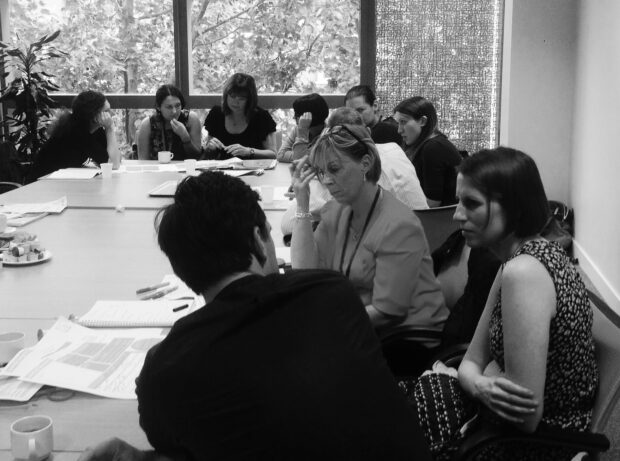User-centred design (UCD) is increasingly on the agenda of government. The Government Digital Service (GDS) has consistently championed user needs - see GDS head Mike Bracken's post. Policy Lab is using ethnographic approaches to help government generate policy solutions, informed by insights about people's lived experiences. And Matthew Hancock, Minister for the Civil Service, recently highlighted the importance of better designing services around the needs of users.
But so far, user-centred design has mostly been seen as a specialist activity in the Civil Service, relevant to those involved with digital implementation or operational delivery. This is changing. Civil Service Learning, with Policy Lab and GDS, is gearing up to deliver learning on user-centred design from April 2016. We’re adopting a participatory approach from the start and would like to draw on insights from civil servants as well as some leading experts involved in teaching user centred design.
We held a workshop with a cross-section of potential learners - mainly civil servants working in operational areas, but also some analytical and corporate colleagues. We were also joined by some experts in delivering learning from Futurelearn, Live/work, Nesta, and Userfocus, to keep us grounded in current practice in teaching and learning in user experience, design, service design and social innovation. Even this brief workshop which doesn’t replace the need for comprehensive research and analysis, allowed us to generate useful insights.

Key themes that emerged in the workshop were:
- Civil servants have very diverse learning needs on the topic – ranging from using user-centred design to inform the next spending review, through to working out how to have more effective work coaching discussions
- People like to learn in different ways and will want to develop different levels of expertise in UCD, depending on their roles, work contexts and cultures, and organisational priorities.
- Civil servants need a basic understanding of what UCD is and how this approach can help them achieve their goals.
Here's our current cut of what the learning should give civil servants:
- Basic principles: give civil servants a working understanding of design and user-centred design, the value of user centred design and how to bring the approach into their work to (a) explore user needs; (b) design something new; or (c) optimise something that already exists.
- Generating user insights: give civil servants ways of finding out who their user is and what their latent needs are and converting this into design solutions.
- Involving people in design: give managers a working understanding of design and how to involve people practically in generating opportunities and designing solutions.
- Learning from testing ideas in practice: give civil servants a working understanding of iterative prototyping as an approach to refining solutions so they are more likely to work in practice.
But we’d love to hear your views too. Can you imagine taking a course (in any form – online, face to face…) in user-centred design? How might it help you in your work?
Do comment. Or, if you’d rather not, email me at policy.profession@policyprofession.gsi.gov.uk, or even draw up your own pen portrait. You can see in depth findings and comments from the session on Slideshare.
4 comments
Comment by Ed Price posted on
This is really important, but I think the key people to involve are policy makers as they often constrain options before engaging with a range of stakeholders and partners. We also need to find ways to work across MoG boundaries to consider users as a whole, and not just their interaction with individual departments and agencies.
Comment by Ulele posted on
We're due to try out some learning on design for policy makers shortly. It'll be delivered by Policy Lab. Looking forward to seeing how that goes.
Jim, I'd love to a chat about your training - I'll pick this up offline.
Comment by Jim Downie posted on
Ulele. In DWP we are embedding UCD through our Academy initally then in day to day building and delivery of services. We've developed and iterated that training offer several times and happy to share how that's going.
Comment by Mike posted on
It's key to designing any policy to genuinely explore implementation and delivery as an integral part of the design process, including talking from the outset to those who will or might operate it. But do enough policy makers do this? I'd prefer a focus on getting these fundamentals embedded, including addressing the lower value that often seems to be placed on those looking at the policy/delivery interface. UCD (or UX for computer interaction) are to my mind for those who already get the basics.